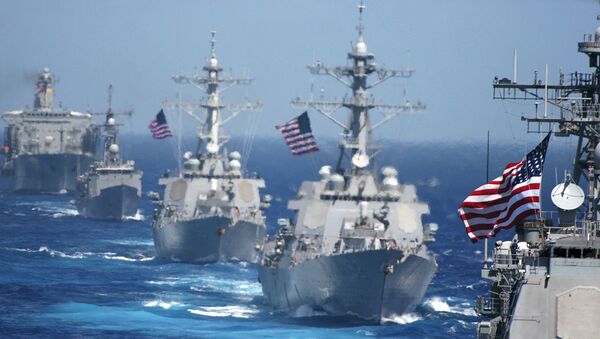According to the report, the Navy plans on developing and producing several types of large unmanned vehicles (UVs) and is requesting about $580 million in research and development funding for fiscal year 2021 for these UVs and their enabling technologies.
“The Navy wants to acquire these large UVs as part of an effort to shift the Navy to a more distributed fleet architecture,” the report notes, also indicating that such a fleet would include fewer guided-missile cruisers and destroyers and more frigates and littoral combat ships.
The report also notes that while smaller UVs can be deployed from manned Navy ships and submarines to “extend the operational reach of those ships and submarines,” large UVs are more likely “to be deployed directly from pier to perform missions that might otherwise be assigned to manned ships and submarines.”
In addition, large unmanned surface vehicles (USVs) would be between 200 and 300 feet long and would be able to carry weapons such as “anti-surface warfare and strike payloads, meaning principally anti-ship and land-attack missiles.” The Navy plans on developing two USV prototypes next year, one in 2022 and another in 2023.
Medium USVs, on the other hand, would be between 45 and 190 feet long and mostly used for electronic warfare systems as well as intelligence, surveillance and reconnaissance payloads.
In July, the Navy awarded a $35 million contract to L3 Technologies Inc. to develop a prototype for a medium USV.
The report also cites a desire to stay ahead of China as one factor behind the Navy’s decision to invest in more unmanned vessels.
“The Navy wants to employ accelerated acquisition strategies for procuring these large UVs, so as to get them into service more quickly. The Navy’s desire to employ these accelerated acquisition strategies can be viewed as an expression of the urgency that the Navy attaches to fielding large UVs for meeting future military challenges from countries such as China,” the report notes.



